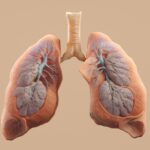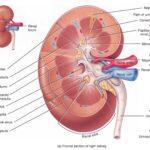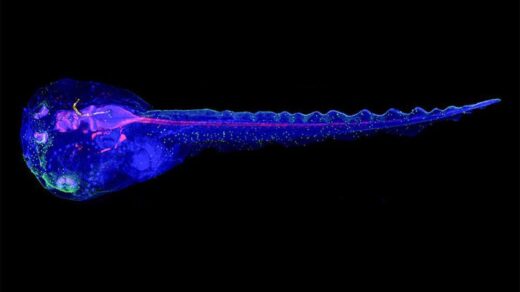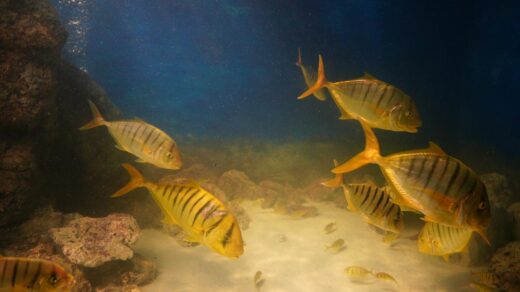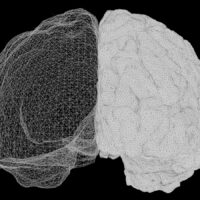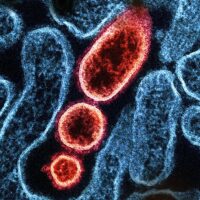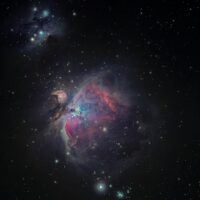Physiology of Respiration
Respiration refers to the exchange of respiratory gases (O₂ and CO₂) between the external environment and the body through the physiological process of diffusion.
This exchange of gases occurs between the blood and the alveoli in the lungs, as well as between the blood and the tissues of the body.
Diffusion is defined as the movement of gases from an area of higher concentration to an area of lower concentration, down the concentration gradient.
This means that oxygen (O₂) moves from areas where its concentration is higher to areas where it is lower, and carbon dioxide (CO₂) does the opposite.
The atmospheric air at sea level contains approximately 20.09% O₂, 0.03% CO₂, 79% nitrogen (N₂), and traces of other gases.
The total atmospheric pressure at sea level is 760 mm Hg.
Each gas in the atmosphere exerts a partial pressure proportional to its concentration in the mixture.
The partial pressure of O₂ in the atmosphere is about 159.3 mm Hg (20.09% of 760 mm Hg).
However, in the alveoli, the partial pressure of O₂ is lower, around 104 mm Hg.
This difference causes O₂ to diffuse from the external environment into the alveoli of the lungs during inspiration.
Conversely, the partial pressure of CO₂ in the atmosphere is about 0.3 mm Hg (0.03% of 760 mm Hg), while in the alveoli, it is around 40 mm Hg.
This gradient causes CO₂ to diffuse from the alveoli into the external environment during expiration.
Respiration can be categorized into two types based on the presence or absence of oxygen:
Aerobic and Anaerobic Respiration
Aerobic respiration requires oxygen for the complete oxidation of food, releasing more energy.
In contrast, anaerobic respiration does not require oxygen and results in the incomplete oxidation of food, releasing less energy.
In mammals, respiration consists of two phases:
External and Internal Respiration
External Respiration
External respiration, also known as breathing, involves the exchange of gases between the external environment and the blood. This process includes ventilation and the diffusion of gases between the lungs and the blood. During ventilation, O₂ is inhaled into the lungs and CO₂ is exhaled out.
Internal Respiration
Internal respiration refers to the oxidation of food in the presence of O₂ within cells and tissues, producing energy for living activities. This process is also known as tissue respiration or cellular respiration and takes place in the mitochondria of living cells.
By understanding the physiology of respiration,
we can appreciate the essential mechanisms that sustain life through the continuous exchange of gases and the production of energy within the body.
Mechanism of Breathing
The mechanism of breathing is facilitated by the diffusion and transport of respiratory gases from regions of higher concentration to regions of lower concentration. Breathing includes ventilation and diffusion through the alveoli, allowing gas exchange between the blood and the external environment.
Ventilation
Ventilation refers to the exchange of oxygen (O₂) and carbon dioxide (CO₂) between the external environment and the blood. It includes two processes: inspiration and expiration. These processes are performed by the contraction and relaxation of breathing muscles.
Inspiration
During inspiration, the thoracic cavity expands, allowing air to flow into the lungs. The volume of the thoracic cavity increases as the diaphragm contracts and moves downward, while the external intercostal muscles contract, pulling the ribs upward and outward. This expansion decreases the pressure inside the thoracic cavity compared to the external environment, causing air to enter the lungs.
Expiration
During expiration, the thoracic cavity decreases in volume, pushing air out of the lungs. The diaphragm relaxes and moves upward, while the internal intercostal muscles contract, pulling the ribs downward and inward. This increase in pressure within the thoracic cavity forces air out of the lungs.
Breathing Muscles and Respiratory Mechanism
Breathing muscles are divided into two types:
Intercostal Muscles
The Diaphragm
Intercostal Muscles
Intercostal muscles are specialized muscles located between the ribs.
There are two types:
1. Internal Intercostal Muscles: These muscles extend downwards and backwards from the lower border of one rib to the upper border of the rib below. Their contraction decreases the volume of the thoracic cavity, facilitating expiration.
2. External Intercostal Muscles: These muscles extend downwards and forwards from the lower border of one rib to the upper border of the rib below. Their contraction increases the volume of the thoracic cavity, facilitating inspiration.
Diaphragm
The diaphragm is a dome-shaped muscle that separates the thoracic cavity from the abdominal cavity.
It is concave towards the abdominal cavity and convex towards the thoracic cavity. The diaphragm’s contraction and relaxation play a crucial role in the breathing process.
Inspiration Process
Inspiration is primarily controlled by the phrenic nerves. During inspiration:
– Air containing O₂ enters the lungs, also known as inhalation.
– The external intercostal muscles contract, expanding the thoracic cavity.
– The diaphragm contracts and flattens, increasing the thoracic cavity’s volume by approximately 500 cubic centimeters.
– The lungs expand, reducing the intrapulmonary pressure compared to the external environment, allowing air to flow into the lungs.
Expiration Process
During expiration:
– CO₂ is expelled from the lungs, also known as exhalation.
– The internal intercostal muscles contract, reducing the thoracic cavity’s volume.
– The diaphragm relaxes and moves upward, decreasing the thoracic cavity’s volume.
– The increased intrapulmonary pressure forces air out of the lungs.
Breathing Cycle
Breathing occurs in a cycle called the breathing cycle. Inspiration is followed by expiration, and after expiration, there is a short period of rest known as a pause.
Rate of Breathing
The rate of breathing varies with age:
– Adults: 12 times per minute
– Young individuals: 16 times per minute
– Children: 26 times per minute
An adult typically ventilates about 500 milliliters of air per breath, known as tidal volume. The total amount of air ventilated in an adult human is approximately 12 x 500 = 6000 milliliters per minute.
Factors Affecting the Rate of Breathing
1. Temperature: An increase in temperature raises the rate of breathing because it decreases the percentage saturation of hemoglobin.
2. CO₂ Concentration: Higher CO₂ concentration increases the rate of breathing.
3. O₂ Tension: Low O₂ tension stimulates the force of breathing.
4. Muscular Exercise: During exercise, the demand for O₂ increases, raising the rate of breathing to meet energy requirements.
5. Stress and Strain: Stress increases the rate of breathing to meet higher energy demands.
6. [H+] Concentration: The concentration of hydrogen ions directly affects the rate of breathing.
7. Respiratory Center: Located in the medulla oblongata, it regulates and stimulates the rate of breathing.
8. Reflex Actions: Reflexes like sneezing and coughing can increase the rate of breathing.
9. Adrenaline: The release of adrenaline stimulates the respiratory center, increasing the rate of breathing.
✦✦✦✦✦✦


